When Joanne suggested a visit to Bruges (as I was thinking of it then), I said, Bruges? Although the name was familiar, and I knew that it was in Belgium, that was about all I could raise out of my memory bank. But I was game for an adventure, and Joanne is well travelled, so I figured that her suggestion was not completely out of left field, and probably worth following. And I was not disappointed.
Brugges, as it is know in Belgium, was the hub of European commerce starting in the 10th through the 14th centuries. It was never governed by a king or queen, but by a council of merchants, and kept its commercial qualities all the way into the 15th century, and, one could argue, today. In 1000, the city was actually a port on the ocean, and ships could sail right into the Markt in the middle of town to unload their wares. But over the next 200 years or so, silt built up in the water ways into the town, and eventually choked the water back about 10 kilometers back to the sea shoreline. (The ocean is visible from the Belfry in the center of town – see photo.) Today, the town is almost purely a tourist attraction; in the late 1900s, the English, many of whom had settled themselves in the town across the Channel, convinced the townspeople that its history was worth preserving, and the effort to renovate the medieval town was begun.
My historical perspective is based on readings from Joanne’s guide to Belgium and from the tour we received from Marie-Paul, a professional colleague of Joanne’s (had been at the conference in Wales with her the previous week), and a professional tour guide in Brugges, as well as a Brugges native. Marie-Paul picked us up at 5 p.m. the day we got into the town, and took us on a two-hour walk through the town, and then we persuaded her to sit down with a glass of wine, during which we got another hour of personal and historical conversation out of her (stories of her family, best place to buy chocolate, etc.). Apologies in advance for any gross misstatements of fact, but I am writing this in my breezy way of remembering things, perhaps not quite exactly…
Joanne and I took the train from Paris to Lille and then into Belgium on a Thursday morning. (See previous posting on Paris adventures, with description of train rides to and from Belgium.) It was a bright sunny day, and we arrived in the Brugges station by 10:30 a.m. I was struck immediately, as we left the train station, by the enormous number of bicycles parked outside the station (see photo). This was clearly a biking town! I learned later from Marie-Paul that bikes are king in Brugges (car use is discouraged), and a biker can go in any direction on any street in the town, and ALWAYS has the right of way over a vehicle. This appealed to the biker in me, of course. We took a taxi into town, however, to our hotel, Koffieboontje. (No idea what that name means or stands for – it’s Flemish for something!). (http://www.hotel-koffieboontje.be/) The hotel was exactly in the middle of town, right next to the Belfry, the highest structure visible for miles around.
We attempted to check in early to the hotel, but were told to come back at 1. Joanne was a little eager to check in, because on the train she’d discovered her clothes were all wet in her overnight bag as a result of a water bottle not being completed closed when it was shoved in the bag early that morning. So, forced to wait for our room, we left our bags at the hotel and wandered in to the main square, the Markt. This is where things happened in the early years of the town, where commerce began in the Medieval era. According to Marie-Paul, the bourse, or stock market, had its beginnings in this town, as the merchants engaged in business transactions amongst each other in the town. The Belfry, towering over the Markt, with its 366 stairs, beckoned to me. Now a working carillon clock in the town, it was depository for vital town documents in the Middle Ages, as well as the main trading location as ships unloaded their wares in the nearby dock. The dock is no longer there, but it was an innovative place for unloading, given its protective roof that allowed ships to unload even in bad weather (not uncommon in this northern clime).
Leaving Joanne in the square, I climbed up the 366 stone stairs, negotiating past other tourists making the climb. It didn’t take me very long, and frankly, I wasn’t even winded. Darn, I was looking for a little workout! But the view from the top was pretty interesting, and I took a bunch of photos of the town (without really knowing at what I was looking at that point). (Its climb reminded me of a similar tower in Bologna, Italy, I had climbed with my sister and niece, with a wonderful view of the town.)
We were in Brugges for a few reasons. Joanne had been reading the Dorothy Dunnett House of Niccolo series, in which Niccolo (a fictional character) has adventures with Anselm Adornes (an historical figure) in 15th c. Brugges. In that spirit, we made a pilgrimage to the Jersualem kerk (church) in Brugges built by the Adornes family and where Anselm and his wife Marguerite are buried. (see photos). The other draw for Joanne was the art of several Belgian artists in the several museums in town – those artworks known specifically as the Belgium Primitives (which all acknowledge is a strange decription, but it differentiates them from a later period, I gather). I have to acknowledge my own ignorance with respect to art, and in this instance was happy to explore the town without spending time in art museums.
Coming back down the 366 stairs (quite a bit faster, of course), I joined Joanne in the main square. It was chilly, but manageable in the sun, so we took advantage of one of the many open air cafes and enjoyed an al fresco early lunch, whiling away the time (and following the quarterly updates from the Belfry carillon) until we could check into the hotel.
Finally, we walked back across the square to the hotel and were given the key to our double room, just inside the hotel courtyard. It was a small room, but sufficient for our needs for one night, with a shower and water closet, a TV, and two beds pushed together. During lunch, we had decided to head toward the museums in town, but, given her need to minimize foot travel, Joanne decided to rent a bike from the hotel to bike to the museums, and I would walk. I left Joanne at the bike rental place, and headed off on foot to the designated museum, which took me about 5 minutes. I figured it would take Joanne a little longer to figure out the bike and such, so expected her in about 15 minutes. But then the 15 minutes stretched into 20, and then 30 minutes. At that point, I had walked into the museum, making sure she hadn’t slipped past me, and checked out the particulars, and, noting the 8 € entry fee, decided that I wasn’t really that interested in the art. Joanne finally showed up at the museum, admitting she had gotten hopelessly lost trying to the find the museum. I told her that I was going to let her do museums on her own, and that I would walk around, and then go for a run before our planned rendezvous with Marie-Paul at 5. My thinking was that I should go on my run while the sun was still out and bearable in shorts and a long sleeved t-shirt; I had not brought my running tights or hat, and I was pretty certain that early morning temperatures the next day would require some serious outerwear.
Brugges is really a small medieval town, that was surrounded by a canal in its early days, but it was never a town that was fought over, so the type of garrisons typical of medieval towns are missing. A town of about 20,000 today, its population was nearly double that in the 1400s. Today the older canal surrounding the city is built over in places, and a larger canal surrounds the larger more modern town. For my run, I scrutinized a town map, and figured out how to make it out to the outer canal, on which it looked like there was a biking or running path. And indeed, there was – one can almost always count on European cities for this type of outdoor activity convenience. My run took me up past several windmills on the Canal, and then back toward a water park (at least that’s what I took from the name); a good 40 minutes by the time I was back at the hotel. Along the canal I found a few runners, but mostly bikers, and school kids on their way home from school, older people out for a stroll, and tourists lugging cameras and ogling the windmills. Joanne and I would take bikes out to the canal path the next day, and do the same exact thing – ogle windmills.
I showered and changed in time for our meeting with Marie-Paul. She was a lovely woman, and shared her very extensive knowledge of the town and its history with us. I gave her credit; she had spent the day speaking French with another town client, and then had to switch to English for her tour with us. Flemish is, of course, her native language; and she described learning the Brugges dialect from her mother, but how she decided not to burden her own daughter with having to learn a language that no one ever uses…
At the end of our walk and talk with Marie-Paul, Joanne and I looked for a place for dinner. We didn’t want to walk back to the restaurant we had seen along the way and recommended to us (it had already been a long day of walking), so we ended up at the main square, with its many cafés. In the chilly evening air, we sat ourselves directly under two heaters in the café we arbitrarily chose (closest to the hotel), so we enjoyed our shared Flemish beef stew and Goat Cheese salad and a few Belgian beers in relative comfort.
The next morning, we luxuriously slept in, although I made sure we were up and on our way to the hotel breakfast before it closed down at 10. We had a 3:30 train back to Paris, and on the list of things to do before we left was a bike ride and a visit to the Jerusalem kerk – also a visit to the recommended chocolate store. The hotel had one of those wonderful European hotel buffet breakfasts, including coffee and warm milk you could pour into little carafes to take to your table, a full cereal offering, plus hard boiled eggs, a selection of breads and rolls, yogurt and fruit juice, and of course, cheese and sliced meats! I suggested to Joanne that we “take out” some cheese and bread for our lunch; the 50€ dinner from the night before was more than I had expected to spend on food on this trip. She was agreeable and we wandered out of breakfast with lunch in hand.
By the time we had finished breakfast, it was nearly 10:30 and checkout time was 11, so we packed up our things so we could check out and leave our luggage in the hotel lobby. I rented a bike for four hours for 7€ (Joanne had rented hers for 24 hours the day before), and we headed out for our meandering on wheels around 11. As mentioned, we took in the Jerusulem kerk and the Canal, also the Minnewater – not a water park per se, but a crossing of the canals, creating a fairly large water body around which a park had been built. We found the chocolate store and spent quite a bit of time and money there too. We finished up our bike ride near the St. John’s Hospital (built in the 1400s, and a working hospital for the indigent until the 1970s) where we sat by the canal and enjoyed our cheese and bread sandwiches, as well as some fruit brought on the train from Paris.
We returned our bikes around 2 p.m. and wandered back to the main square and our café from the previous day’s lunch to have a farewell beer in the hour we had to kill before leaving for our train. It was the fitting end to a lovely two days.
Monday, September 29, 2008
Subscribe to:
Post Comments (Atom)
































































































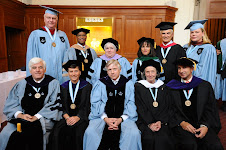






























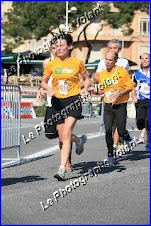
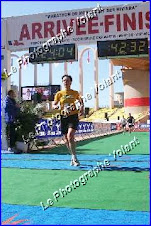









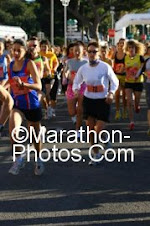
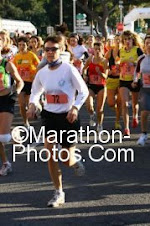









































No comments:
Post a Comment